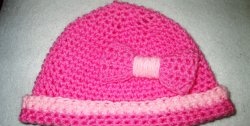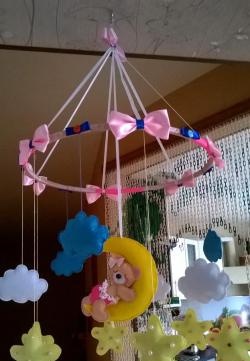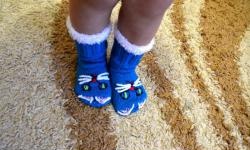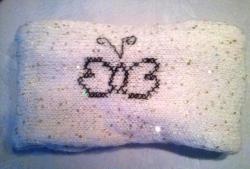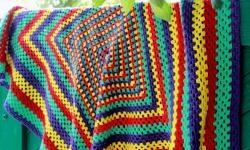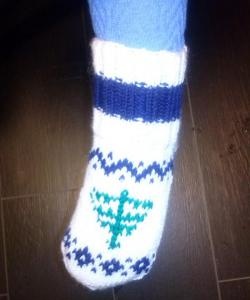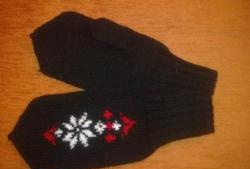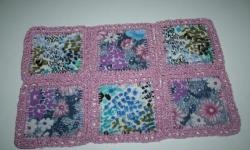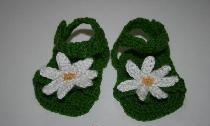For a plaid measuring one meter per meter and twenty centimeters, seven skeins of thread (700 grams) are required if there are 164 meters in a skein. We use Red Heart Soft Baby Steps acrylic for children. A plain blanket for a child will be uninteresting, so take three skeins of delicate pink, three lilac and one turquoise.
In 100 grams of acrylic, a 164 meter long thread will be voluminous. Knitting needles can be taken No. 3.5, No. 4, or even No. 5, it will depend on the density of your knitting. If the loops are tight, it is better to take the five. I knit easily, so I choose No. 3,5 and the same crochet hook. Since the width of the product is large, we use circular knitting needles on the flagellum. In the process of work, in order not to tear off the thread, and not to close the edges when switching to crochet, additional knitting needles or large knitting pins will be needed. I used knitting needles.
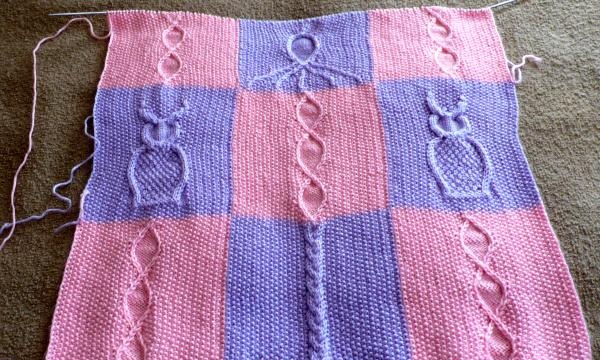
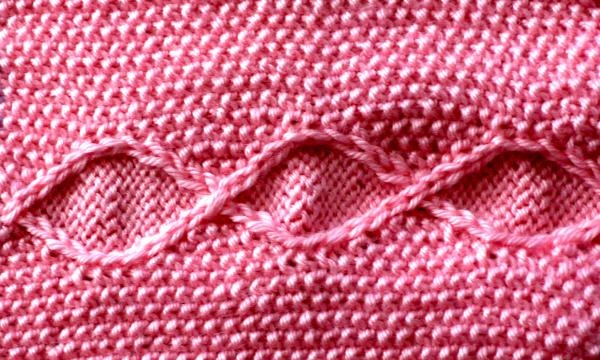
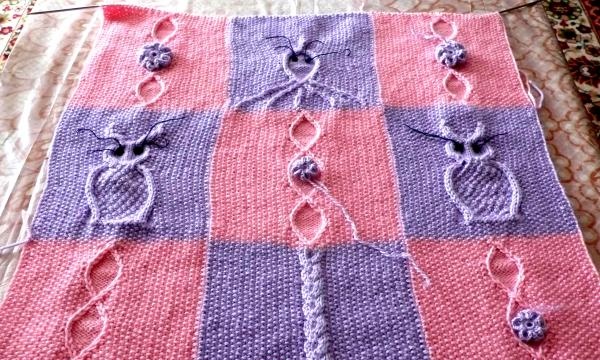
We collect 120 loops, for the set you can use one color, and in the first row we change the color every 40 loops. We knit rectangles of lilac and pink color. Each rectangle is 40 loops wide, 70 rows long. We will choose a neutral drawing for the general canvas, the “rice field” will go well, or some will call it “pearl”. Changing the front and back stitches in a checkerboard pattern gives a truly “pearl” overflow.
Just “empty” rectangles will look faded. Therefore, in the extreme, we symmetrically knit with the help of an elongated loop and flipping rhombuses. And in the middle rectangle we “braid” the braid, it is not difficult to knit it, also with the help of loop throws. Thanks to the pattern, it’s not necessary to consider the rows in the knitting process as “diamonds”. In 70 rows there are three rhombuses, if their width is increased to nine loops, then nine also knit one front row, and only then begin to decrease.
Next, change the color of the threads, knit a lilac one over the pink rectangle and vice versa. Let's make the drawing more interesting. Knit in the two extreme rectangles on the owl. The eagle owl is knitted in the same way as the braids, only you need to look in which direction to throw the loops, and knit its “face”. The height of the squares remains the same, since in one we knit three rhombuses.
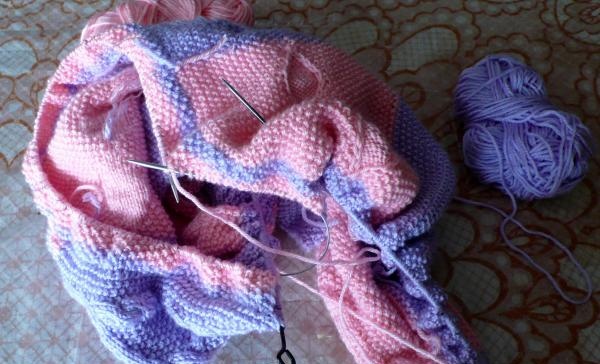
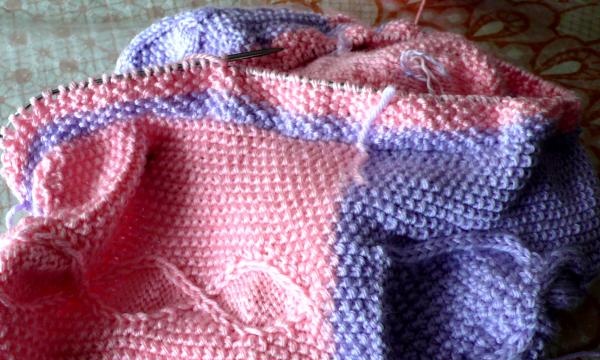
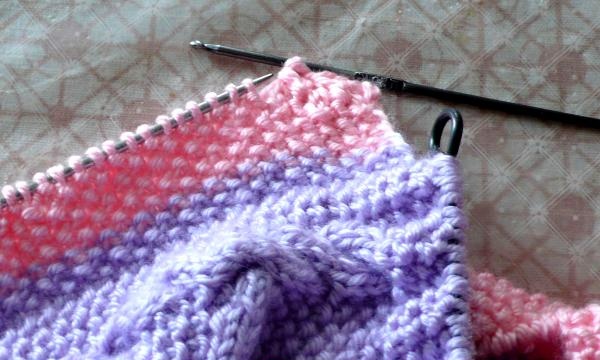
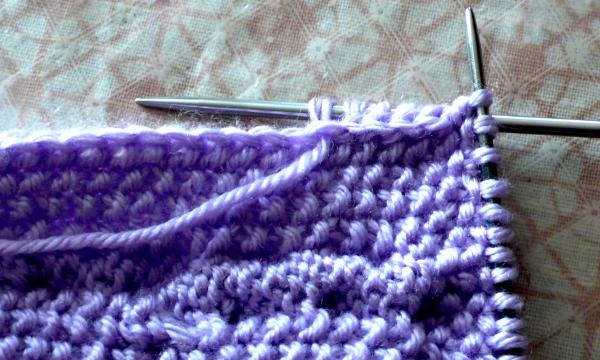
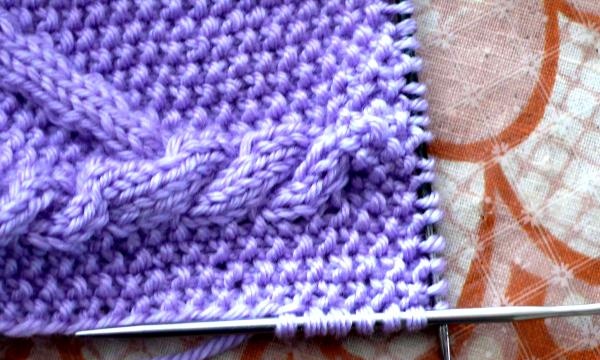
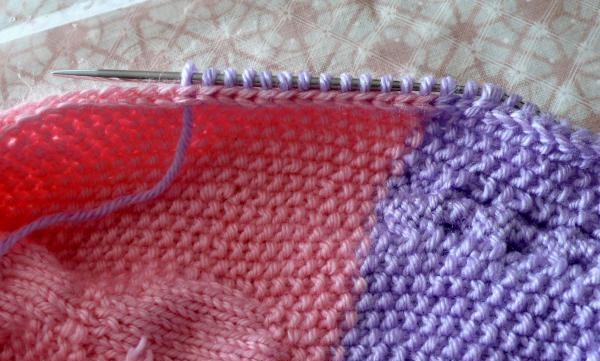

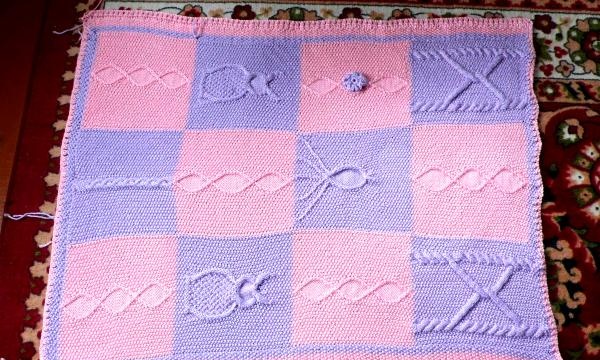
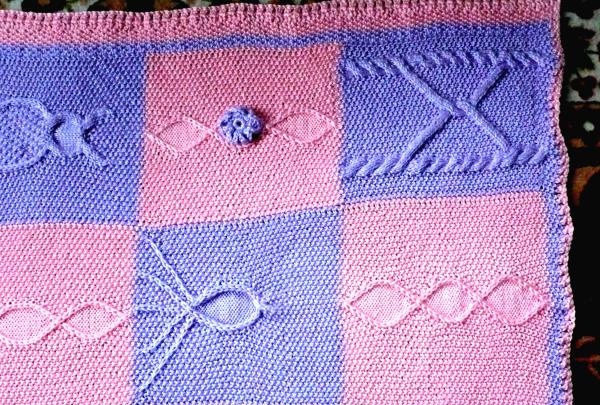
Again, change the color of the threads and come up with some other pattern. We will connect the octopus in the central square. We begin to throw out the extended loops, bringing the legs of the octopus together, then we knit out the head. It’s not difficult at all. In the extreme squares, we continue to knit diamonds, and the height of the squares turns out unchanged.
In the fourth line of squares, we again make weaves, but in such a way that there is then the opportunity to sew bows in the center. There are three rhombuses in the pink square. The loops do not close, leave on the knitting needles, or put on a knitting pin.


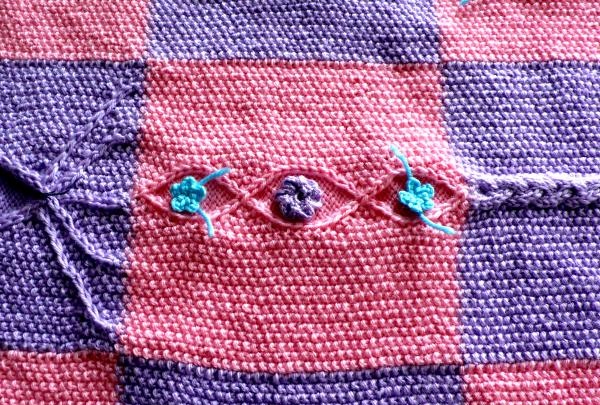

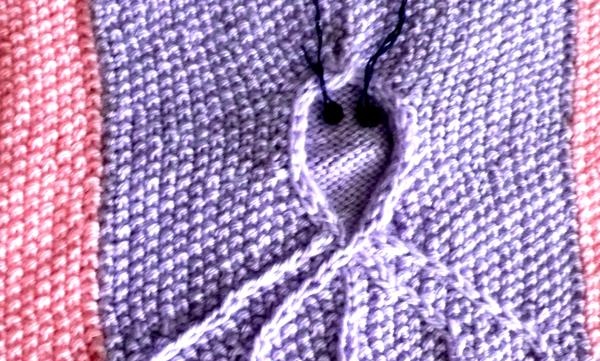
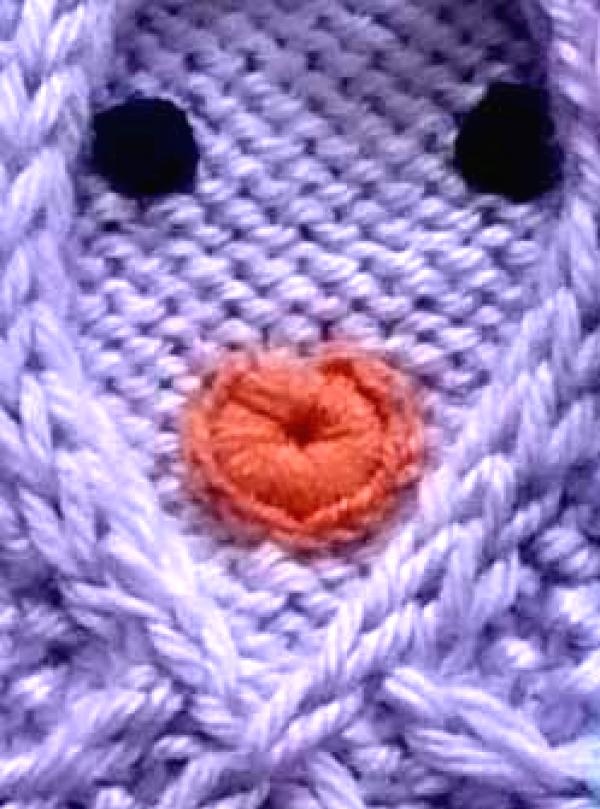
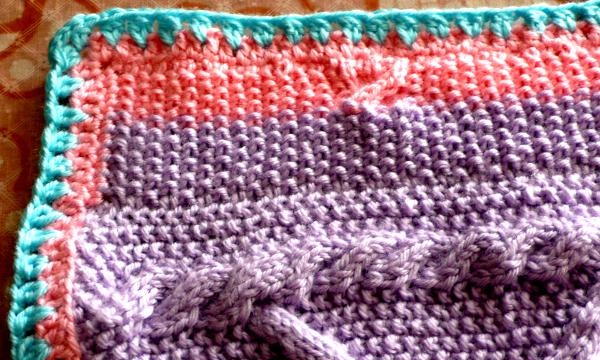
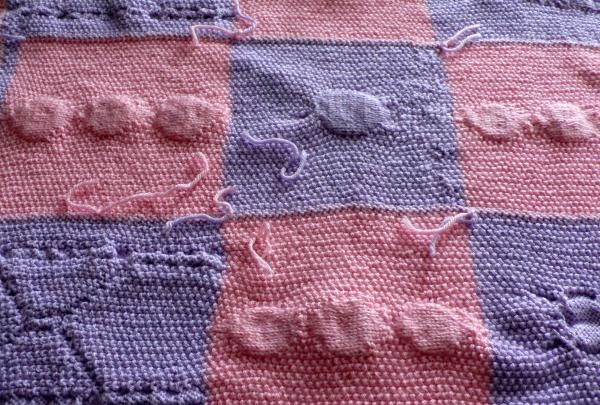
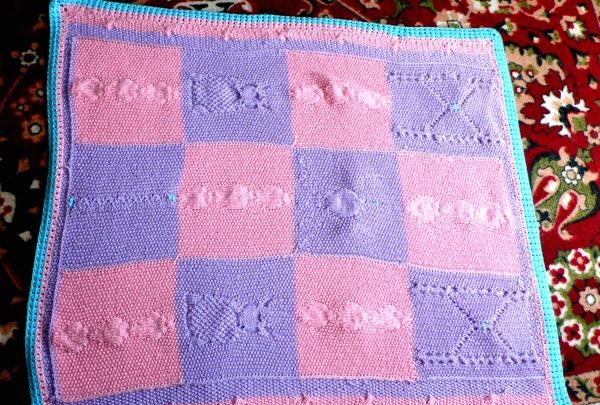
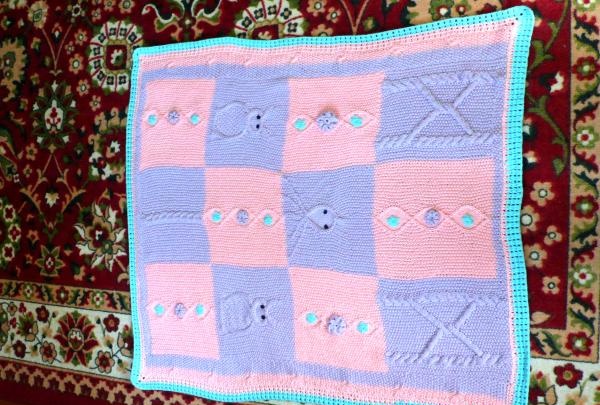
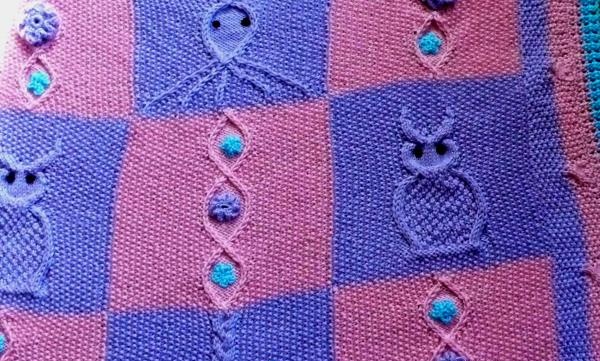
The next step will be a set of edge loops. If you make one free loop from each edge, the canvas will lie flat. We get the thread from below, then on the front side the joint will not stand out. On the wrong side you get a straight line of edge loops. We knit on all four sides with lilac and pink, then we continue to crochet with a pink thread.We do not close the loops from the knitting needles, and from them we immediately make half columns so that the edges do not turn out to be tight.
We crochet already in a circle, making a rise at one of the corners. You can select any pattern for tying. After a couple of circles, the pink threads end and go to turquoise. We do the bordering, with the calculation that there are left threads for decorating the plaid. In order not to leave extra threads, it is better to perform decor before knitting with turquoise threads.
We knit a simple rope with air loops. To make it larger, take a larger hook. Then weave this rope into one of the braids, and fix it on the left side. We will make bows from the same air strings.
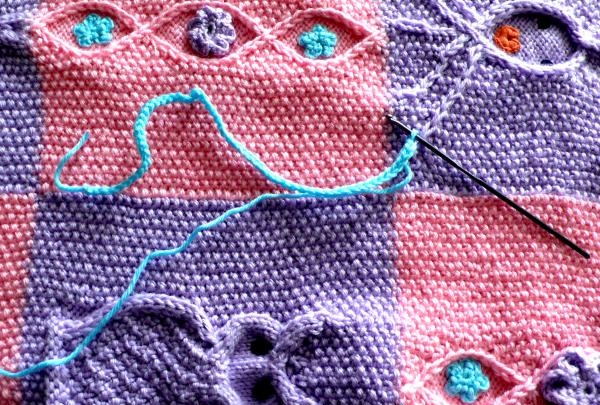
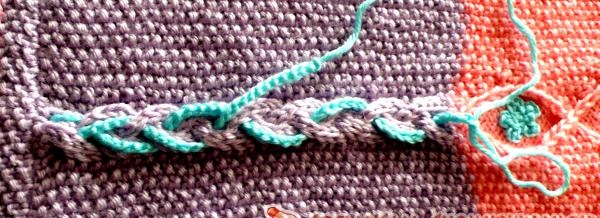
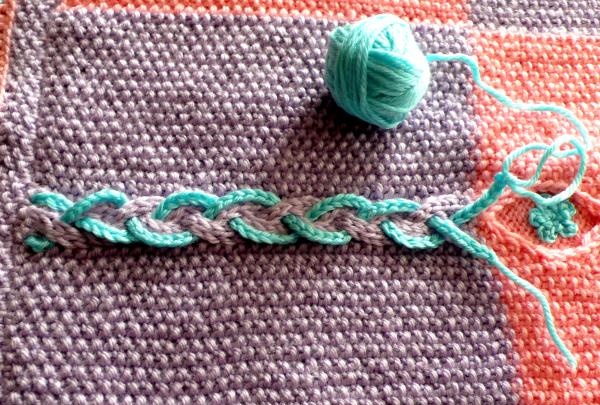

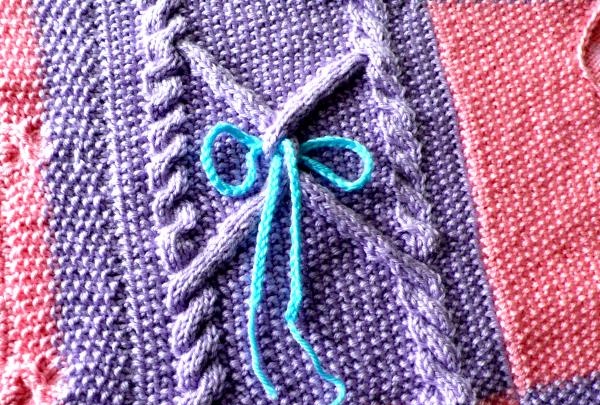
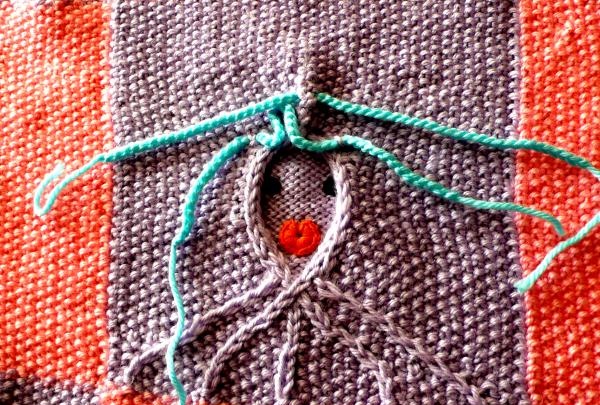
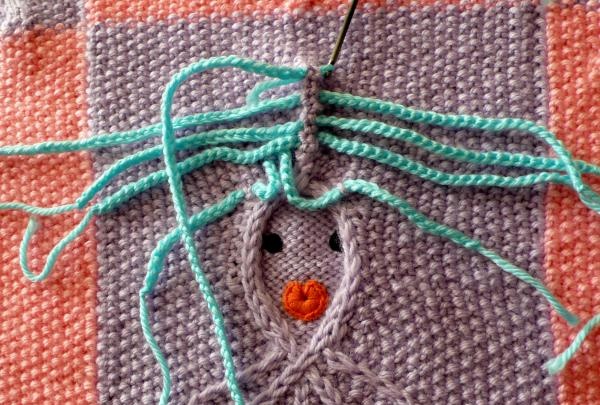
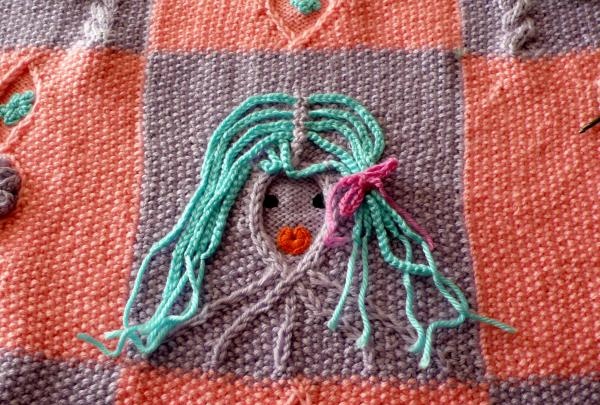

To complete the appearance of the owls, it is enough for them to tie and sew on eyes of black or dark blue color. Octopus will also need eyes. It is easy to crochet your lips by tying an amigurumi ring and tightening the inner loop tightly. You can leave the octopus, but it will be more interesting if you sew on the “hair”. Let's make a hairstyle for an octopus from the same ropes of turquoise color. All the ropes must be sewn neatly on the left side so that the baby does not pull them out.
For rhombuses, you can tie flowers. We also sew them around the entire perimeter of the flower so that little fingers cannot tear off.
Now look at the plaid on the left side. Since the color of the threads changed, there were a lot of “tails” and knots. We gently hide them, dragging a hook in the middle of a knitted fabric. Look again at the left side - everything turned out beautifully, and not a single nodule is visible.

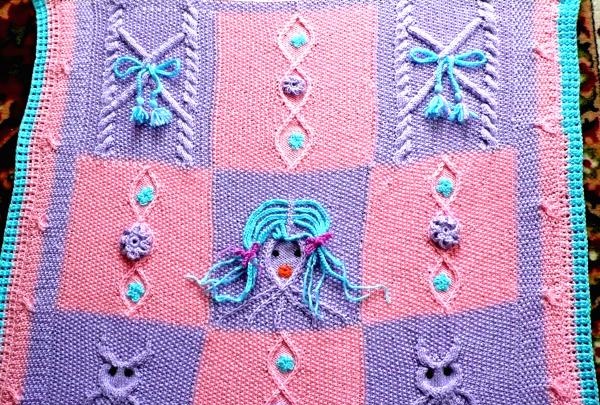
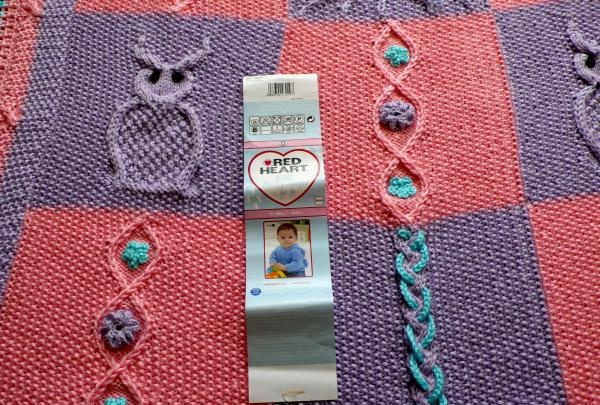
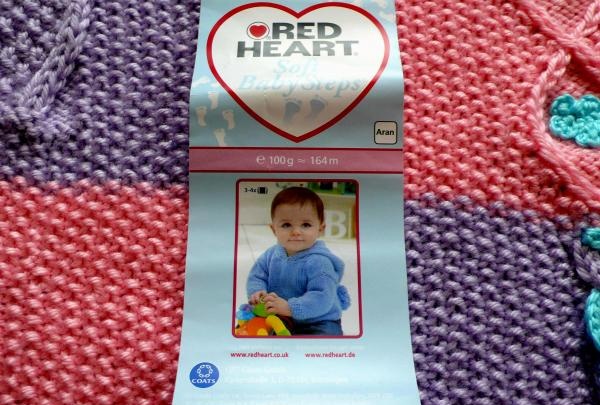

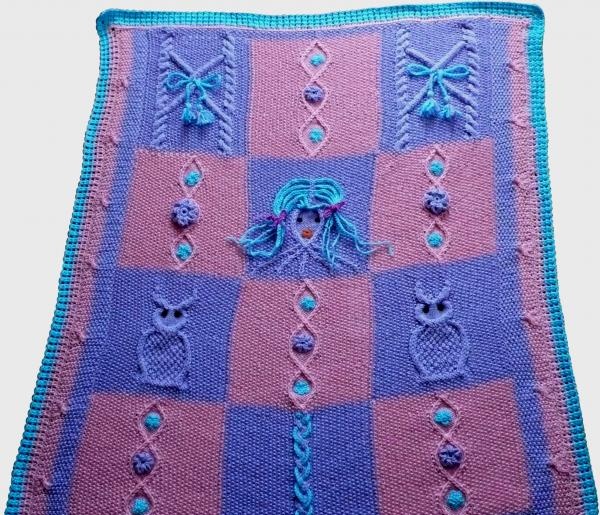
The plaid turned out to be of a gentle coloring, but funny and interesting.
